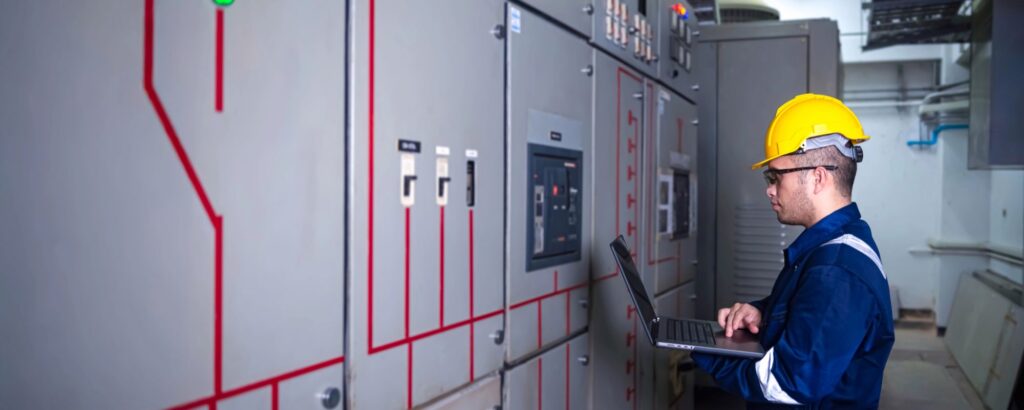Remote Machine Monitoring vs. On-Site Monitoring
- Home
- Blog Details

- October 22 2024
- systemadmin
Monitoring machinery in manufacturing is like having a pulse on the equipment. It tells you when the machines are running smoothly and helps catch issues before they spiral out of control. Traditionally, monitoring was done on-site with technicians physically present to check every detail. But as technology advances remote machine monitoring is becoming the next logical step as it offers real-time data and control from anywhere. In this article, we’ll take a closer look at remote machine monitoring vs. on-site monitoring and explore their benefits, challenges, and differences.
Table of Contents
ToggleOn-Site Monitoring

On-site monitoring is the traditional way of keeping an eye on machines in a manufacturing facility. It involves technicians and engineers being physically present to oversee operations. This manual approach allows them to monitor performance metrics, inspect components, and respond immediately to any issues. The technicians are always on-site watching machine parameters such as temperature, power consumption, spindle speed, tool wear, and other essential items specific to their process.
One of the main advantages of on-site monitoring is the ability to access machine data instantly. Technicians on the ground can quickly spot and address abnormalities and minimize downtime. Because this method doesn’t rely on internet connectivity, it’s particularly useful in locations where network stability might be an issue.
On-site monitoring requires a significant investment in human power and also needs skilled workers who are adept at monitoring machines and processes. Even in plants that employ some level of digitization to observe the process, on-site personnel are needed to monitor things. For companies with multiple manufacturing sites, scaling up on-site monitoring can also become costly.
Remote Machine Monitoring

Remote machine monitoring is made possible by using the Industrial Internet of Things (IIoT) and cloud-based platforms. With remote monitoring, manufacturers can collect real-time data from machines across multiple locations, analyze performance, and address issues without needing technicians on-site.
One of the main benefits of remote monitoring is its scalability. Companies with multiple manufacturing sites can monitor all operations from a centralized dashboard and reduce the need for on-site staff. The data collected can be analyzed to identify patterns, predict maintenance needs, and prevent potential failures.
In the long run, remote machine monitoring is useful for condition monitoring of machinery and equipment. Detailed performance data can be streamed and stored over time with sensors and IoT devices installed on machines. This data can be used to assess performance and predict loss in efficiency or equipment failure well in advance.
While there are downsides to remote machine monitoring in the form of network and cybersecurity challenges, it is better in every parameter compared to on-site monitoring.
Remote Machine Monitoring Vs. On-site Monitoring (H2)
Now let’s look at some of the key remote machine monitoring vs. on-site monitoring differences:
| Difference Parameter | Remote Machine Monitoring | On-Site Monitoring |
| Cost Savings | Remote monitoring offers greater cost efficiency compared to on-site monitoring. | On-site monitoring requires continuous investment in personnel, training equipment, and operations. It can add up in terms of cost especially in large or multi-site operations. |
| Scalability | Scalability with remote monitoring is a major benefit as it allows manufacturers to oversee multiple sites from a centralized location. | The need for physical presence and skilled technicians limits on-site monitoring. Since an extensive training period is involved, scaling is slower compared to remote monitoring. |
| Data Collection and Analytics | Remote monitoring systems are designed to collect vast amounts of data in real-time. The data is instantly updated to secure servers and is available for analytics almost instantaneously. | On-site monitoring can gather high-quality data. However, uploading manual data to the MES or ERP systems takes time, which makes instantaneous analytics impossible. |
| Maintenance and Downtime Management | By using predictive analytics, remote systems can identify potential issues before they lead to machine failure. Maintenance than then be scheduled appropriately. | On-site monitoring is often reactive and addresses issues only after they’ve occurred. |
| Security and Compliance | Remote monitoring systems rely on internet networks making them vulnerable to cybersecurity threats. However, remote service providers have robust security features for data transfer and storage. | On-site monitoring faces physical security risks, data breaches from human error, and sabotage. Compliance with industry standards also has to be part of mandatory training for the personnel. |
| Decision Making | Remote monitoring makes instantaneous, data-driven decisions a common thing with manufacturers. Collecting real-time data from machines provides a complete overview of operations that can be analyzed to identify trends and optimize performance. | On-site monitoring also supports data-driven decision-making. However, there is a significant lag from when the data is collected to when it is uploaded to the system for analytics. The lack of real-time insight makes it hard to detect immediate trends and early warning signs. |
| Competitive Advantage for Manufacturers | With the world already in Industry 4.0, manufacturers adopting remote monitoring have a competitive edge over others. Moreover, they are able to offer better maintenance to clients backed by robust data. | Although on-site monitoring is effective in smaller localized operations, it may not offer the same level of flexibility and scalability. Manufacturers relying solely on on-site monitoring might find it more challenging to compete globally. |
To Wrap It Up
While both remote and on-site machine monitoring play their roles in manufacturing, the future is remote. We have seen the differences in remote machine monitoring vs. on-site monitoring in terms of cost, security and data-backed decision-making, and there’s a clear winner. Manufacturers need to incorporate remote machine monitoring to stay competitive in an ever-growing digital production ecosystem.
If you wish to learn more about how you can upgrade to remote machine monitoring, get in touch with our team and request a demo!

